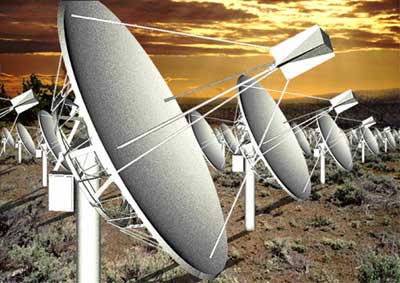Letter: response to “SETI politics”by Seth Shostak
|
| Our ability to build good telesensing equipment is far outpacing our efforts at making enormously faster rockets. Ergo, I suspect that we will send equipment, rather than ourselves, for any direct interstellar exploration. |
These are all technical nits. Of greater consequence is Mr. Anderson’s mis-characterization of my opinion on interstellar travel, on which he writes “Shostak argues that interstellar travel will always be so expensive that societies will always elect to explore deep space through some version of SETI.” This is not my view at all. I have no idea whether interstellar travel for exploration will happen sooner or later, but I’m rather optimistic that it will eventually happen. I think that interstellar travel for biological beings is a long shot frankly, but if you’re either willing to send telesensing apparatus, or just spend a long time getting there, then going to the stars is possible, and at some level of technology, feasible.
I think, however, it is worth noting that our ability to build good telesensing equipment is far outpacing our efforts at making enormously faster rockets. Ergo, I suspect that we will send equipment, rather than ourselves, for any direct interstellar exploration. That’s my view of things. Mr. Anderson thinks otherwise, noting for example that “Long-term economics and trade may be another driver [for interstellar travel]; establishing English colonies in North America led to extraordinary economic advances…” I respectfully point out that such examples all involved members of the same species, and even then, “trade” was not the driver. The Europeans did not wish to trade with the Aztecs (what did the Aztecs import?) but merely put them to work in silver mines. And the Mesoamerican cultures are estimated to have been only 500 years behind their European counterparts in terms of technical development. The difference between interstellar societies will be far greater.
Mr. Anderson’s true agenda is to plead that SETI researchers should be accepting of “Little Green Men zipping through spacetime in flying saucers.” I would be happy to accept this idea if there were only convincing proof. When discussing alien UFOs, it is a common canard to argue that the SETI community’s skepticism is simply due to their failure to be open to the idea. That’s wrong. Their skepticism is rooted in the lack of good evidence.
